Retro Replay Review
Gameplay
Edtris 2600 captures the core mechanics that made the original Tetris a timeless classic, distilled into the limited hardware of the Atari 2600. Blocks of various shapes—known as tetrominoes—fall steadily from the top of the screen, and your task is to rotate and position them to form complete horizontal lines. Once a line is filled, it disappears, granting you points and freeing up space for more blocks. The simple rules belie a deeper challenge: as you clear lines, the game accelerates, demanding quicker reflexes and sharper spatial reasoning.
(HEY YOU!! We hope you enjoy! We try not to run ads. So basically, this is a very expensive hobby running this site. Please consider joining us for updates, forums, and more. Network w/ us to make some cash or friends while retro gaming, and you can win some free retro games for posting. Okay, carry on 👍)
The controls are straightforward, relying on the Atari joystick to move pieces left, right, and down, with a single button press for rotation. While modern players used to analog sticks and precise timing might find the responsiveness a bit stiff, it remains impressively faithful for a 2600 homebrew title. The deliberate pacing at lower levels gives newcomers time to learn patterns, while the frantic dash of later stages will have veterans scrambling to keep their stacks under control.
What truly elevates Edtris 2600’s gameplay is its balance between accessibility and escalating intensity. Early rounds are forgiving, allowing players to experiment without severe penalties. However, by the time you reach the higher speeds, every misplaced block can trigger a cascading failure, making each play session a thrilling test of endurance and strategy. This blend of approachability and ruthless challenge is the essence of a great puzzle game, and Edtris delivers in spades.
Graphics
Given the Atari 2600’s graphical limitations, Edtris 2600 presents a remarkably clear and recognizable playfield. Tetrominoes appear as simple, solid-colored blocks against a stark backdrop, ensuring you can distinguish shapes even at high speeds. The palette is pared down to primary hues—reds, blues, greens, and yellows—that pop against the black play area, preserving functional clarity over flashy aesthetics.
There are inevitable compromises. The 2600’s two-player sprite limit can introduce brief flickering when multiple blocks overlap near the top of the screen, and the resolution forces each block to occupy a generous chunk of screen real estate. Yet these quirks only add to the retro charm, evoking the era when every pixel counted. Fans of vintage gaming will appreciate how Edtris leans into these constraints, turning them into stylistic hallmarks rather than distractions.
Animations, such as line clears and piece drops, are handled with minimal fuss but enough visual feedback to keep the experience engaging. When a line vanishes, the remaining blocks above shift downward seamlessly, and the screen briefly flashes to celebrate your accomplishment. It’s a modest flourish, but in the context of a homebrew Atari 2600 release, it feels like a small victory—a reminder that even on legacy hardware, thoughtful design can shine through.
Story
As with most puzzle games, Edtris 2600 doesn’t offer a narrative campaign or character arcs; its “story” is found in the rhythm of the gameplay itself. Each session unfolds as a personal struggle against mounting pressure, with the rising wall of blocks serving as both antagonist and measure of your skill. In place of a scripted storyline, you get an open-ended challenge: how long can you stave off defeat?
More broadly, Edtris 2600 carries the legacy of Tetris into the realm of retro console enthusiasts. This homebrew project is a labor of love, paying homage to both Alexey Pajitnov’s original creation and the pioneers of Atari programming. Its existence speaks to the vibrant community that still keeps the 2600 alive, crafting new experiences on a platform that debuted over four decades ago.
Though there’s no plot in the traditional sense, there is a rich subtext for players who appreciate gaming history. Edtris 2600 is a testament to how a simple concept can transcend technological generations, inspiring countless adaptations and spin-offs. Playing it is like stepping into a time capsule—one where the essence of Tetris meets the gritty ingenuity of retro homebrew development.
Overall Experience
For fans of puzzle games and retro gaming aficionados alike, Edtris 2600 offers a captivating blend of nostalgia and challenge. It strips Tetris down to its bare essentials, presenting a distilled experience that feels both familiar and refreshingly raw. There’s no tutorial mode or fancy extras—just you, the falling blocks, and the ticking clock of an ever-increasing difficulty curve.
The homebrew nature of Edtris 2600 means you’ll likely pick it up as part of a specialized cartridge or flash cart for the Atari 2600, making it a niche acquisition. However, the modest hardware requirements and straightforward gameplay ensure it runs smoothly and reliably on original hardware. For collectors and enthusiasts, it’s a standout showcase of what dedicated hobbyist development can achieve.
Ultimately, Edtris 2600 provides a pure puzzle-game experience that resonates with anyone who appreciates elegant design under constraint. It may not have the polish of modern Tetris iterations, but its authenticity and charm lie in its simplicity. If you’re looking to challenge your reflexes while basking in the glow of a bygone era of gaming, Edtris 2600 is a must-try title that captures the enduring magic of Tetris on the venerable Atari 2600.
 Retro Replay Retro Replay gaming reviews, news, emulation, geek stuff and more!
Retro Replay Retro Replay gaming reviews, news, emulation, geek stuff and more!
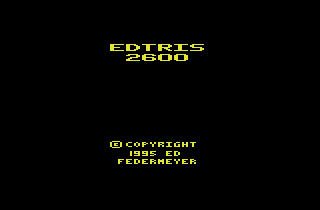
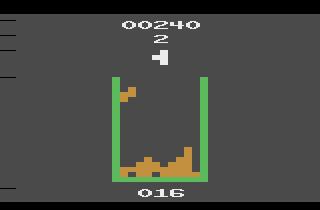
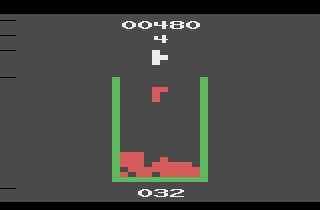
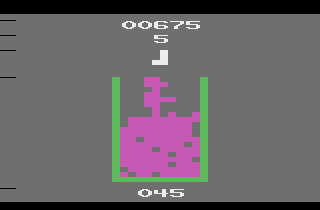
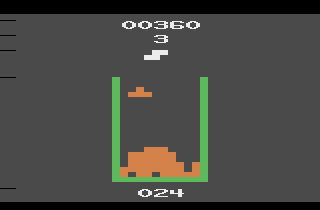



Reviews
There are no reviews yet.